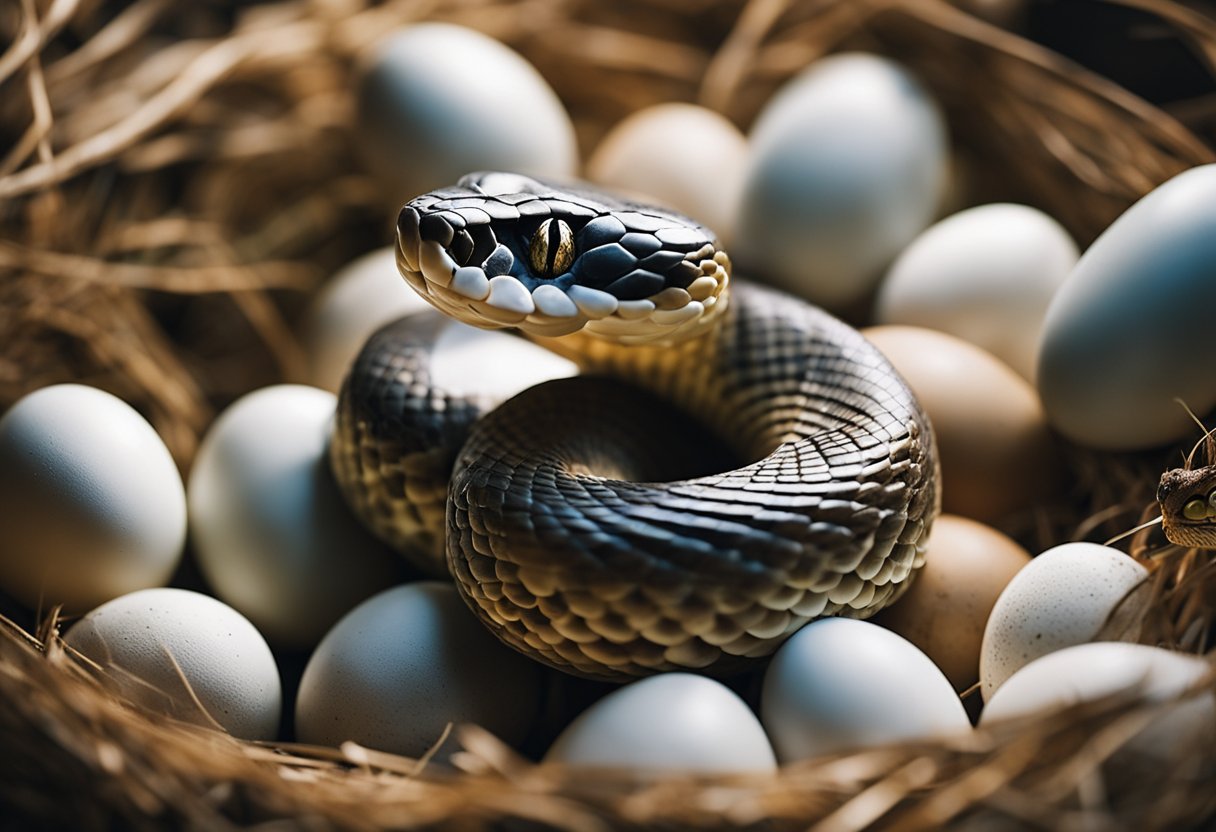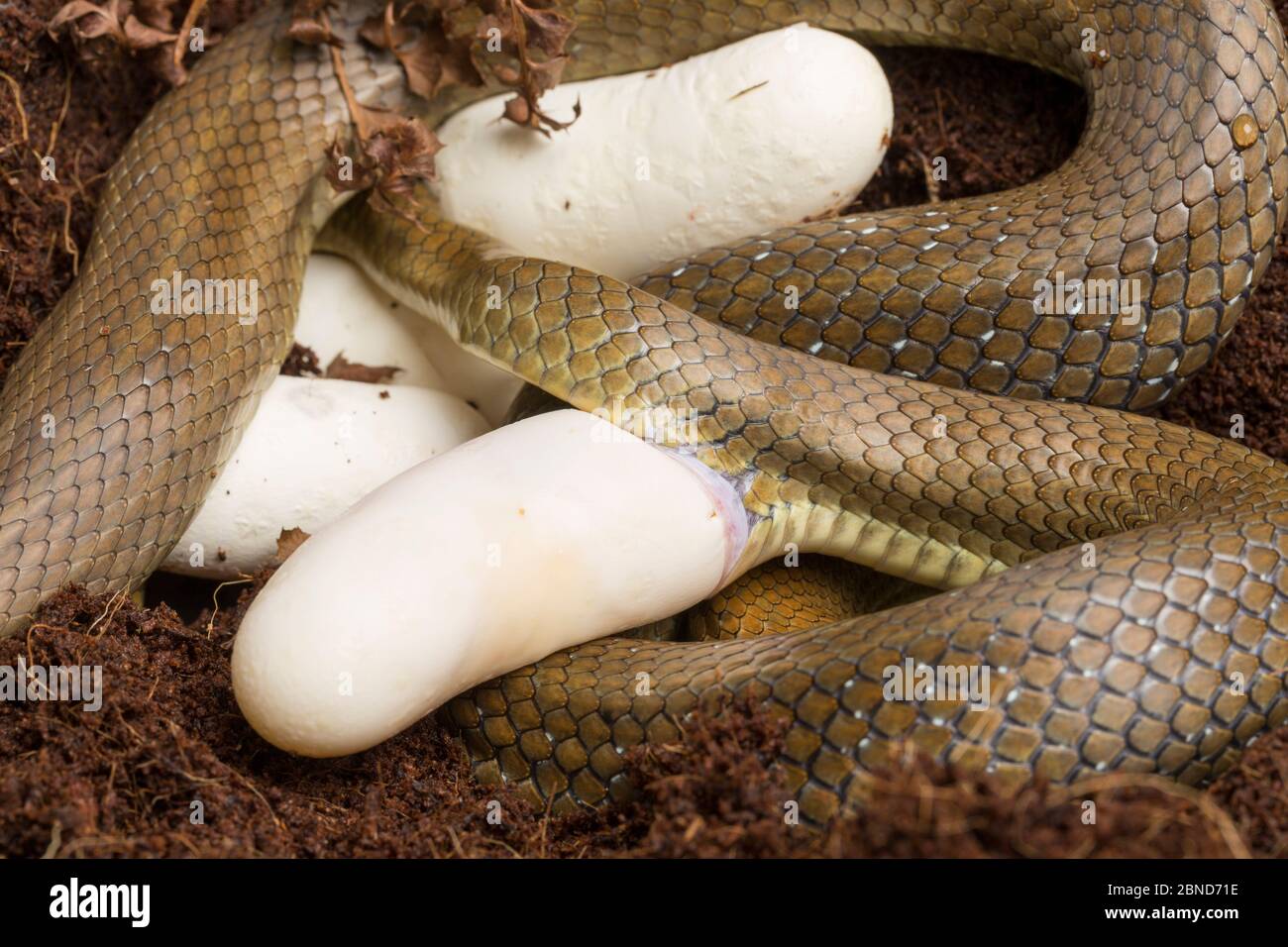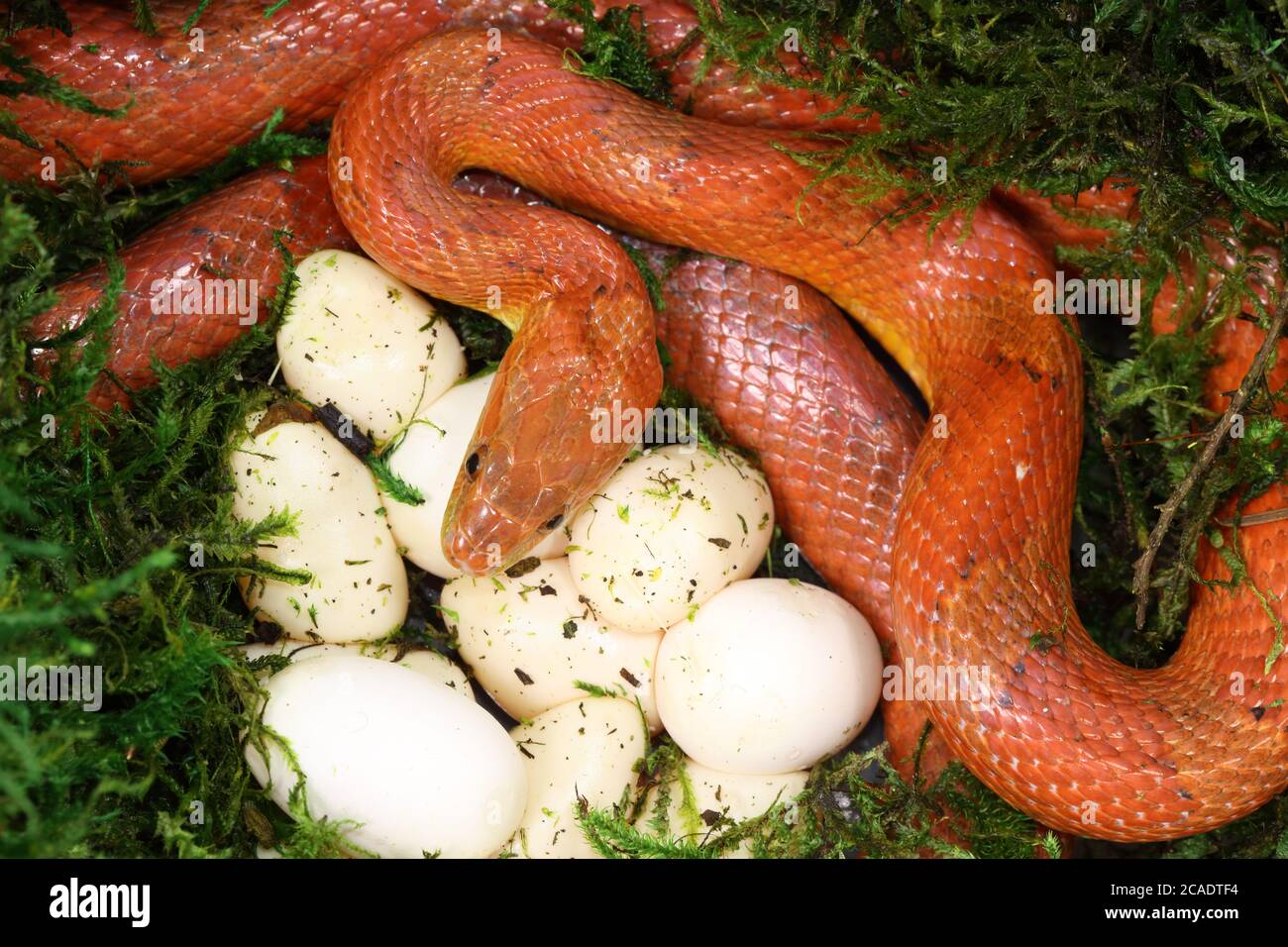Snakes: Egg-Laying & Live Birth Explained!
Do snakes hatch from eggs, or do they give birth to live young? The answer, remarkably, is both; the reproductive strategies employed by snakes are as diverse as the species themselves.
The world of serpents is a realm of fascinating biological diversity, particularly when it comes to reproduction. The notion of a single, uniform method of procreation in snakes is a misconception. In reality, these reptiles have evolved a range of reproductive strategies, from the familiar egg-laying (oviparity) to live birth (viviparity), all shaped by environmental pressures and the evolutionary history of each species. Understanding these reproductive modes is essential to appreciating the adaptability and ecological success of snakes.
Snakes exhibit three primary reproductive modes, each reflecting unique adaptations to their respective environments. Approximately 70% of snake species are oviparous, meaning they lay eggs. This is the more common method, echoing the reproductive strategies seen in many other reptile groups. These snakes typically deposit their eggs in sheltered locations, such as beneath leaf litter, in burrows, or under rocks. The eggs are protected by a leathery, permeable shell that allows for gas exchange and nutrient absorption, essential for embryo development. Grass snakes, for example, are oviparous, often choosing warm, decomposing vegetation as their nesting sites, taking advantage of the natural incubator created by rotting plant matter. Other species, like the eastern coral snake, may lay six or seven eggs, while the western coral snake lays two to three.
Conversely, about 30% of snake species are viviparous, giving birth to live young. This strategy is particularly prevalent in species found in cooler climates or at higher altitudes. Live birth provides the developing embryos with a level of protection from environmental extremes, particularly temperature fluctuations. The mother snake retains the eggs internally until they hatch, offering a degree of insulation and protection.
Finally, some snakes employ a reproductive strategy known as ovoviviparity. These species retain the eggs inside their body until the young hatch. This process occurs within the female, but the eggs are not nourished directly by the mother. Instead, the embryos develop within the eggshell, using the yolk sac for nourishment. This is a transitional reproductive strategy, blending elements of both oviparity and viviparity.
The reproductive cycle of snakes is often influenced by seasonal changes, with egg-laying and live births typically coinciding with the warmer months. This ensures that the young are born or hatched when environmental conditions are most favorable for survival. The eggs of oviparous snakes are usually deposited during the summer and hatch in the fall. In the case of live-bearing species, the young are born in the late summer or early fall.
The number of eggs laid by a female snake varies considerably depending on the species and the size of the snake. Clutch sizes can range from as few as one to as many as 100 eggs or even more in the larger species. The size of the clutch is often correlated with the size of the female and the resources available to her. A larger clutch size can increase the chances of reproductive success, ensuring that some offspring survive to adulthood.
The appearance of snake eggs also varies. Coral snake eggs are white, oblong, soft, and pliable, measuring about an inch in length. The shells of snake eggs are typically leathery and permeable, allowing for gas exchange and nutrient absorption, essential for embryo development. The eggs must be incubated, or kept warm, until the hatchlings are ready to emerge from the shell. In captivity, this is often done in a controlled environment.
The process of oviposition, or egg-laying, in snakes is a carefully orchestrated event. The female snake positions herself over the nest, and the eggs are laid one at a time, a process that can take several hours. The cloaca, the common opening for the digestive, urinary, and reproductive tracts, widens to accommodate the eggs. The eggs are typically laid in a sheltered location that is out of sight and protected from changing weather conditions. These locations can include leaf litter, beneath piles of sticks or brush, or in burrows abandoned by other animals.
Several factors can threaten unhatched snake eggs. Predators, such as rodents, birds, and other snakes, pose a significant threat. Environmental conditions, such as extreme temperatures or flooding, can also be detrimental. In captivity, the habit of turning eggs can sometimes be harmful. To mitigate these risks, snakes often lay a large number of eggs, which increases the likelihood that at least some of their young will survive.
The age at which snakes reach sexual maturity varies depending on the species. Different snake species reach maturity at different ages, but generally, a healthy snake will reach maturity anywhere between 2 and 3 years of age. This means that the snakes that are born in eggs (oviparous) reproduce mainly through sexual reproduction, which requires two individuals in order to produce offspring.
In summary, the world of snake reproduction is a complex tapestry of adaptations. From the familiar egg-laying of the oviparous species to the live birth of the viviparous, and the transitional ovoviviparity, these reptiles have evolved a remarkable range of strategies to ensure the survival of their offspring in diverse environments. Understanding these methods is key to appreciating the fascinating biology of snakes and the factors that contribute to their ecological success.
| Reproductive Modes in Snakes | Description |
|---|---|
| Oviparity | Egg-laying; the most common reproductive strategy in snakes (around 70% of species). Eggs are typically laid in a sheltered location and incubated externally. |
| Viviparity | Live birth; found in about 30% of snake species. The young develop inside the mother's body and are born live. Common in cooler climates. |
| Ovoviviparity | A hybrid strategy where eggs are retained within the mother's body until hatching, but the embryos are not directly nourished by the mother. |
It's important to note that some snakes, such as corn snakes, may lay unfertilized eggs even without contact with a male. These eggs appear similar to fertilized ones at first, but they often collapse or discolor within days.


